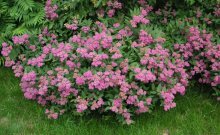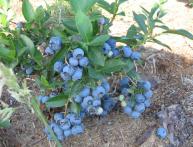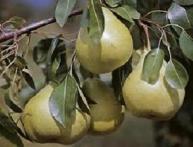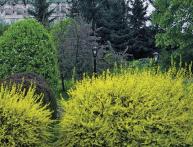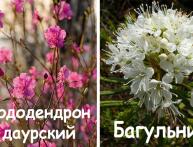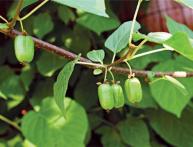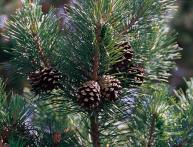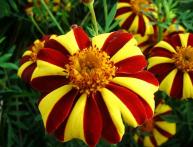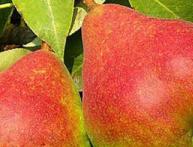Ornamental shrub spirea, planting and caring for it
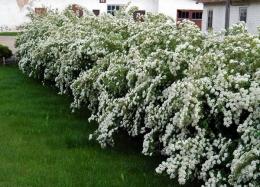
Spiraea is a genus of shrubs from the Rosaceae family, which can be called universal deciduous shrubs for landscaping and landscaping. The number of species and hybrids, differing in the shape and color of the inflorescences, the color of the foliage, the type of crown and the size of the bush, spirea surpasses many decorative plants. bushes. You can select species and varieties in such a way that the spirea will bloom from spring to late summer.
The plant is quite frost-resistant and suitable for almost all regions. Spiraea tolerates urban gas pollution well, which makes it an indispensable plant for landscaping populated areas. Land owners and garden designers like the plant for its versatility and unpretentiousness. Let’s try to figure out what spirea is, planting and caring for it.
Content:
Where to plant spirea
Despite the fact that spirea are divided into those that bloom in early spring and those that bloom in summer, their requirements for lighting, soil fertility, and humidity are approximately the same.
Most types of spirea are very demanding of sunlight. Only some of them are able to grow equally well in both sun and partial shade. Birch leaf spirea grows well in light shade. However, planting spirea in very dark places threatens the plant with slow growth and loss of decorativeness. This is especially true for varieties and hybrids with variegated and colored foliage.
Spiraea is sensitive to soil fertility. It grows well on light, permeable soils with a high content of leaf or turf soil. Soil acidity can be either slightly acidic, slightly alkaline, or neutral.
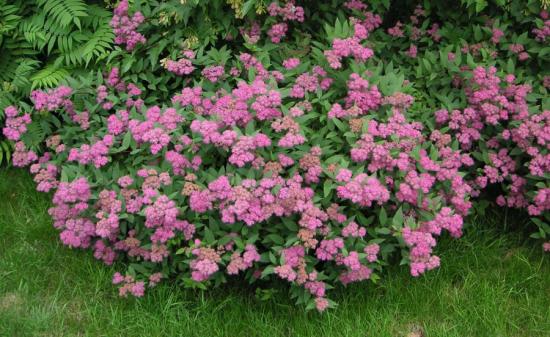
Temperature
The plant thrives in fairly harsh climatic conditions and tolerates frosts down to -35. Sometimes frost damage to the tops of the shoots is observed, but given the fact that in many species the shoots of the current year are blooming, the frozen parts can be cut off.
The plant has good drought resistance. Needs additional watering in hot summers and in the first year after landings. Excess and stagnation of moisture are not desirable. Spiraea will grow very poorly in wetlands. After choosing a suitable site, you can begin planting spirea on the site.
How and when to plant spirea
Planting material
All spirea can be propagated by seeds and vegetative parts. When propagating from seeds, there are two disadvantages - late flowering, not earlier than after 3 - 4 years. The second disadvantage is the formation of seeds in hybrid forms, which do not convey the qualities of the parents. The result of such cultivation is unpredictable. If the seed propagation method is chosen, then at the end of winter or early spring the seeds are sown in seedling boxes.
You can use universal soil. Make furrows and sow spirea seeds. Moisten everything and cover with glass. In a week the shoots will appear. When the seedlings become stronger, they can be planted in open ground. Sometimes when propagated by seed, spirea grow very slowly. If they have not reached a size of 10 - 12 cm by June, then plant them in open ground I'll have to do it next spring.
Planting methods
Therefore, it is better to use the seed method to obtain rare and beautiful varieties if it is not possible to obtain other planting material. The cuttings are rooted in moist soil and transplanted to a permanent place only the next summer. It is more convenient for planting to take root suckers or seedlings obtained from rooting the tips of the shoots.
You can also use the material obtained by dividing the bush. Such spirea will begin to bloom next year. Spiraea seedlings with bare roots or a ball of earth can be planted in both spring and autumn. In spring the best time will be the end of May, and in autumn - mid-September.
Seedlings in containers can be planted at any time. The depth of the hole should correspond to the length of the roots, and the width should be no less than one and a half or two times wider than the root system. The distance between the pits depends on the variety and purpose of the planting. But you should not place them closer than 0.5 - 0.7 m. For tall people varieties with wide bushes, the distance should be at least 1.0 - 1.2 m. For drainage, broken bricks are laid at the bottom of the hole and covered with sand.
Planting a seedling and care after planting
The spirea seedling is installed so that the root collar is above the ground. If the root system is open, then it is advisable to soak the seedling for 12-18 hours in a growth stimulator before planting. The earthen ball is not removed from the roots. Exposed roots are spread over the ground. Carefully cover the roots with soil, slightly compacting it.
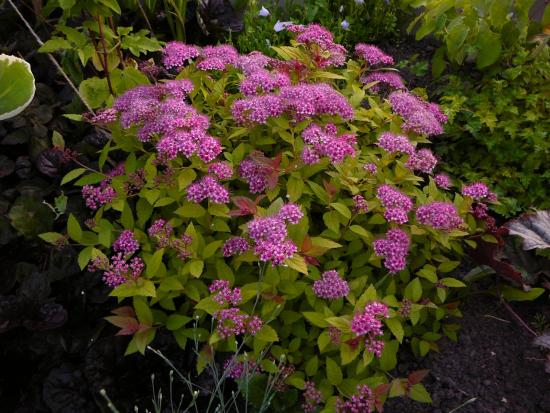
Immediately after planting, water the plant with a bucket of water. The tree trunk circle should be covered with a layer of peat. Layer thickness - 7 cm. In dry weather, repeat watering every 3 - 5 days. It is also necessary to regularly loosen the soil between the spirea bushes. As the seedlings grow, they will need feeding and pruning.
How to care for adult spirea
An important point in caring for spirea is pruning. Conventionally, all spirea can be divided into those that produce flowers on the current year's shoots and those that produce flowers on last year's shoots. In the first case, the bush is pruned in the spring, while cutting off the dry inflorescences of last year. In the second case - in summer or autumn, after flowering ends.
In addition, the bushes need to be rejuvenated. To do this, annually cut out old shoots older than 7-8 years. Sometimes, in summer spirea, shoots can be shortened to 0.3 m above the ground every four years in the spring. After this trimmings the bushes grow even more magnificent. Preparing spireas for winter is of no small importance. Despite frost resistance, the roots of many varieties and hybrids can freeze.
To prevent this from happening, remove plant debris from under the bush and mulch with a layer of peat of at least 10 cm. The following types of spirea can be recommended for cultivation:
- Japanese
- Boumalda
- Douglas
- Nipponian
- grayish
Caring for all spirea is approximately the same; all you have to do is choose the type and variety to suit your taste.
Video about proper pruning of spirea:

